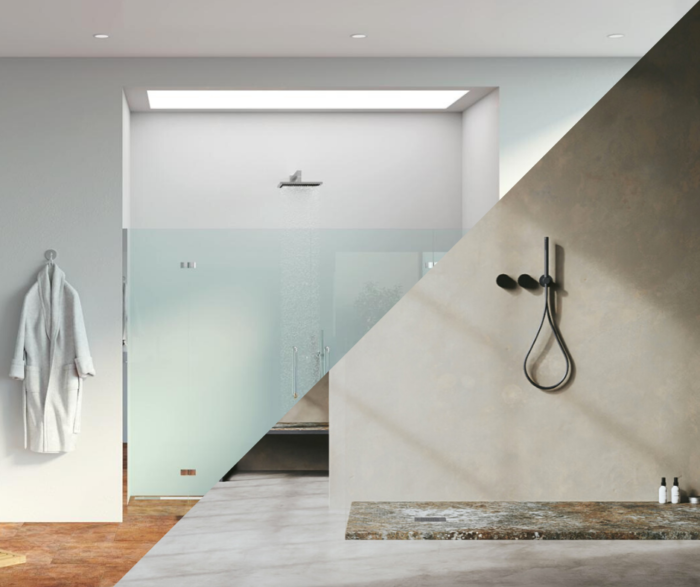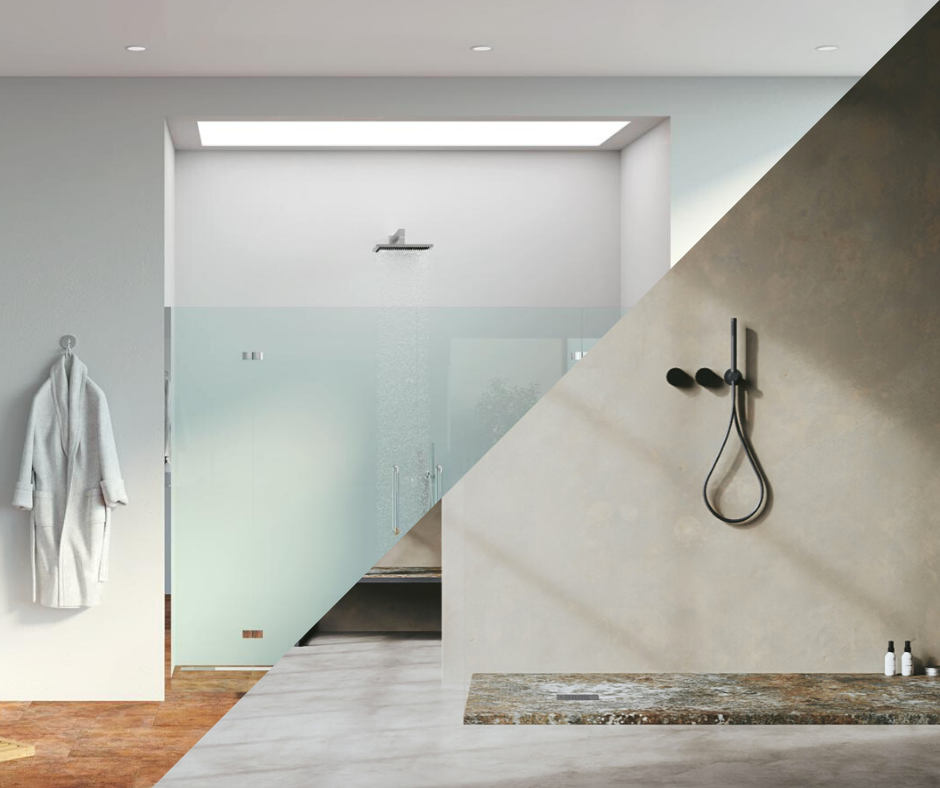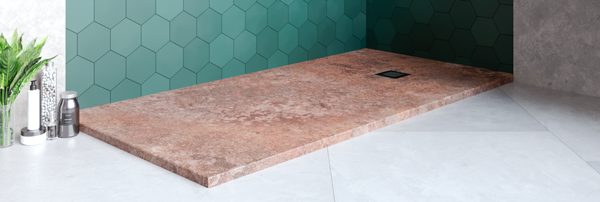Shower tray or built-in shower?
One of the standard changes when renovating bathrooms is to replace the bathtub with a shower, taking into account the following:
- Value-for-money and sustainability: saving water.
- Ergonomics and accessibility: more space in the bathroom and easier access.
Once this decision has been made, you’ll need to choose between installing a custom shower tray or building a built-in shower. Both options have their advantages and disadvantages: the final choice will be based on your budget, the duration and complexity of the work and the look and feel you’re going for.

Let’s break it down into a grid to help you make the right decision:
| Advantages of a shower tray | Disadvantages of a shower tray |
| Light and slimline.
Easy installation and maintenance. Repairable. Less expensive. And if you go for a Solid Surface: quality, resistance, durability, unlimited designs and colors that stay vibrant over time. |
Limited dimensions.
Aesthetics, if you prefer uniformity with the tiles or with the color of the walls. |
| Advantages of a built-in shower tray | Disadvantages of a built-in shower tray |
| Greater flexibility in terms of dimensions.
It mimics the wall, regardless of whether it is built-in or made of other materials such as tiles. |
Complex assembly: multiple technicians will need to intervene, installation of tarpaulin, ensuring the correct slope for drainage… = higher total cost
More complicated maintenance and risk of humidity. |
How can Bosnor shower trays help you make this decision by turning those disadvantages into advantages?
Bosnor’s size range will soon cover any width between 80 and 100cm and any length between 80 and 200cm, while also offering a cut-to-size service at no additional cost, ensuring their adaptability to any dimension or space configuration.
Bosnor’s Print Series/Custom Art offers unlimited shower tray customization, including the mimicking of any texture, ceramic or tile.
So, the best option for your new shower seems a bit clearer now, right?


